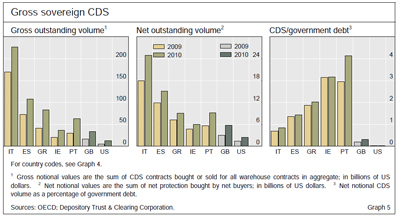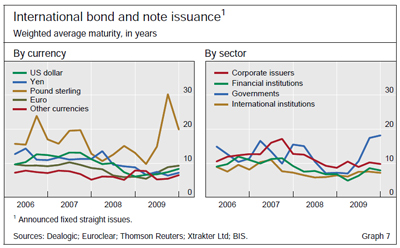Turnover declined dramatically in February to about 18%. Such decline in trading happens occasionally – I remember one period of about three month’s duration during which so few trades were done I was afraid the system was broken and spent a lot of time feverishly checking the code and the results. But one of the great constants in financial markets is a demand for liquidity and the fund is ready to meet that demand at a moment’s notice.
Trades were, as ever, triggered by a desire to exploit transient mispricing in the preferred share market (which may the thought of as “selling liquidity”), rather than any particular view being taken on market direction, sectoral performance or credit anticipation.
| MAPF Sectoral Analysis 2010-2-26 | |||
| HIMI Indices Sector | Weighting | YTW | ModDur |
| Ratchet | 0% | N/A | N/A |
| FixFloat | 0% | N/A | N/A |
| Floater | 0% | N/A | N/A |
| OpRet | 0% | N/A | N/A |
| SplitShare | 4.0% (-0.2) | 7.82% | 7.04 |
| Interest Rearing | 0% | N/A | N/A |
| PerpetualPremium | 0.0% (0) | N/A | N/A |
| PerpetualDiscount | 77.5% (+0.8) | 6.03% | 13.88 |
| Fixed-Reset | 13.6% (-0.8) | 3.75% | 3.84 |
| Scraps (OpRet) | 0% (-2.4) | N/A | N/A |
| Scraps (FixedReset) | 4.8% (+2.3) | 7.17% | 12.18 |
| Cash | 0.0% (+0.1) | 0.00% | 0.00 |
| Total | 100% | 5.84% | 12.15 |
| Totals and changes will not add precisely due to rounding. Bracketted figures represent change from January month-end. Cash is included in totals with duration and yield both equal to zero. | |||
The “total” reflects the un-leveraged total portfolio (i.e., cash is included in the portfolio calculations and is deemed to have a duration and yield of 0.00.). MAPF will often have relatively large cash balances, both credit and debit, to facilitate trading. Figures presented in the table have been rounded to the indicated precision.
The most significant change was a swap from YPG.PR.B to YPG.PR.D, completing the process mentioned in the January performance report. The latter issue yields less, but is cheaper relative to other FixedResets than the former is cheap to OperatingRetractibles – although, mind you, both issues are pretty cheap according to me!
Credit distribution is:
| MAPF Credit Analysis 2010-2-26 | |
| DBRS Rating | Weighting |
| Pfd-1 | 0 (0) |
| Pfd-1(low) | 75.7% (0) |
| Pfd-2(high) | 9.3% (-0.5) |
| Pfd-2 | 0 (0) |
| Pfd-2(low) | 10.1% (+0.3) |
| Pfd-3(high) | 4.8% (-0.1) |
| Cash | 0.0% (+0.1) |
| Totals will not add precisely due to rounding. Bracketted figures represent change from January month-end. | |
Liquidity Distribution is:
| MAPF Liquidity Analysis 2010-2-26 | |
| Average Daily Trading | Weighting |
| <$50,000 | 0.0% (0) |
| $50,000 – $100,000 | 0.0% (0) |
| $100,000 – $200,000 | 24.0% (-2.6) |
| $200,000 – $300,000 | 42.7% (+11.7) |
| >$300,000 | 33.3% (-9.2) |
| Cash | 0.0% (+0.1) |
| Totals will not add precisely due to rounding. Bracketted figures represent change from January month-end. | |
MAPF is, of course, Malachite Aggressive Preferred Fund, a “unit trust” managed by Hymas Investment Management Inc. Further information and links to performance, audited financials and subscription information are available the fund’s web page. A “unit trust” is like a regular mutual fund, but is sold by offering memorandum rather than prospectus. This is cheaper, but means subscription is restricted to “accredited investors” (as defined by the Ontario Securities Commission) and those who subscribe for $150,000+. Fund past performances are not a guarantee of future performance. You can lose money investing in MAPF or any other fund.
A similar portfolio composition analysis has been performed on the Claymore Preferred Share ETF (symbol CPD) as of August 17 and published in the September PrefLetter. When comparing CPD and MAPF:
- MAPF credit quality is better
- MAPF liquidity is a little better
- MAPF Yield is higher
- Weightings in
- MAPF is much more exposed to PerpetualDiscounts
- MAPF is much less exposed to Operating Retractibles
- MAPF is more exposed to SplitShares
- MAPF is less exposed to FixFloat / Floater / Ratchet
- MAPF weighting in FixedResets is much lower



